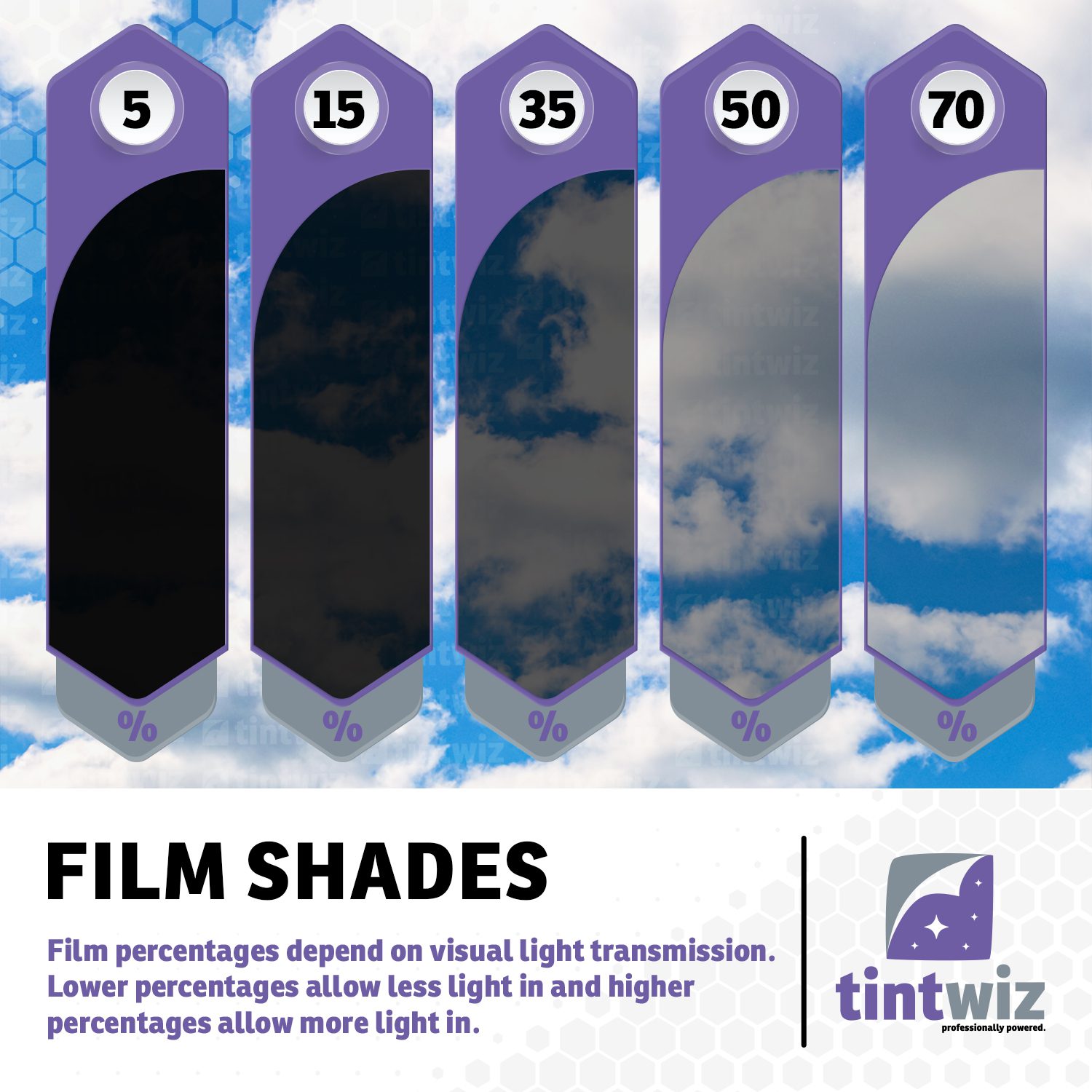Darkest legal tint for Sedans in Idaho
- Windshield: Non-reflective window tint is allowed above the manufacturer’s AS-1 line or top 6 inches of the windshield.
- Front Side windows: Must allow more than 35% of light in.
- Back Side windows: Must allow more than 20% of light in.
- Rear window: Must allow more than 35% of light in.
Darkest legal tint for SUV and Vans in Idaho
- Windshield: Non-reflective window tint is allowed above the manufacturer’s AS-1 line or top 6 inches of the windshield.
- Front Side windows: Must allow more than 35% of light in.
- Back Side windows: Must allow more than 20% of light in.
- Rear window: Must allow more than 35% of light in.
Please note: The accuracy, completeness, adequacy or currency of the content is not warranted or guaranteed. We are not lawyers or a law firm and we do not provide legal advice. We recommend you consult a lawyer or other appropriate professional if you want legal advice.

Car window tint laws in Idaho were first enacted nearly three decades ago back in 1992. In the subsequent years, rules governing vehicle tint in the state have changed several times, usually in response to new window film products and technologies available as the science behind and production of tint improves.
To understand how dark window tint can be in Idaho, you need to understand the concept of visible light transmission, or VLT as it is usually abbreviated. VLT refers to the amount of light in the visible light spectrum that can pass through the tint and effectively means how clear or dark the window is made. The lower the number, the less light passes through, and the darker the window, so a 25% VLT tint is much darker than a 75% VLT, for example.
You also need to understand that some window tints that are of legal VLT are still banned because of reflectivity, or how much they act like mirrors reflecting away visible light. So VLT is not the only factor that establishes window tint legality in Idaho.
Unlike you find in most states, where laws differ based on vehicle type, in Idaho cars, trucks, SUVs, and vans are all governed by the same window tint rules, so going forward note that any term, from vehicle to automobile to car, applies to ant privately owned auto registered in the state of Idaho regardless of type or size.
Windshield Window Tint Laws in Idaho
Windshield tint is imperative for keeping direct sunlight out of your eyes without blocking the view through the windshield, but this tint can only legally be applied to a strip of glass. Idaho state law specifies that vehicles can have windshield tint as far down as the AS-1 line, which is demarcated at the sides of the windshield with small lettering and numbers. If the AS-1 line cannot be determined, then the tint can be a maximum of six inches in thickness.
All windshield tint must be non-reflective, and as noted windshield tint laws in Idaho apply to cars and t larger vehicles just the same.
Front Side Window Tint in Idaho
It’s a good idea to get at least some form of window tint applied to the front side windows of your vehicle as window tint can cut the dangerous glare of the sun or of nearby headlights and can block the UV light that fades and ages cabin interiors (and can damage skin) and the IR light that causes interior heat to rise. Note that many clear or nearly transparent window films block plenty of UV and IR light without changing the look of the vehicle.
In Idaho front side windows may be tinted down to a darkness of 35% VLT, which is more than enough shading to add privacy and style to a vehicle. The window tint on front side windows can have a maximum reflectivity rating of 35%.
Rear Side Window Tint in Idaho
The rear side windows of a car, truck, or SUV in Idaho can have tint rated as dark as 20% VLT, which is mor than enough tinting to add privacy to the passengers back there and to add depth and style to the car. This window tint is also limited to a 35% reflectivity.
Rear Window Tint in Idaho
The rear windshield of a private vehicle registered in Idaho can be tinted down to 35% VLT. Note that dual side mirrors in good working order are required if any tint is applied to the rear windows.
Idaho Window Tint Medical Exemptions
There are a number of health issues that may necessitate darker window tint than would be otherwise allowed by state tinting regulations, and in Idaho you can get medical window tint exemptions with an exam and dispensation from a doctor. Idaho medical tint exemptions based on skin or eye health allow for tint as dark as 20% VLT on front side windows and, in an unusual but welcome exemption, even allow for some window tint on the windshield itself, which may be tinted to 75% VLT, plenty to reduce glare and of course blocking 99% of UV light.
Other Idaho Car Window Tint Rules to Know
Under 2021 Idaho tint laws, there are no restrictions on the colors of window tint you can use on your vehicle. While many states ban red, orange, and amber tints, in Idaho you may use any color of window tinting provided it does not have a reflective surface rated at more than 35% reflectivity.
Idaho tint rules do not require the use of stickers that establish the tint as following the law be applied on tinted windows and window film manufacturers are not required to certify the window tint they sell in the state, nor are installers required to do so. Thus being sure your tint is legal under Idaho law is on your shoulders.
The rules governing window tint in Idaho allow for a three percent variance in window tint VLT, so that even, for example, a rear side window that was tested and found to allow 17% VLT would not result in a citation. It’s still best practices to use window tint that meets the stated regulations, though.
Idaho Window Tint Violations
Window tint violations in Idaho are treated like a traffic infraction under Idaho state law statute 49-944. This means they are civil violations, not criminal issues. You can be issued a ticket of varied cost, and with repeated infractions your fines will go up, but you will never face jail time or other more serious repercussions due to window tint violations in Idaho.
Your window tint ticket cost will be assessed by a court and in most cases will not affect your license status or insurance rates, but they are still best avoided and can be easily avoided because Idaho state window tint laws for cars are not complex and are not particularly harsh or limiting.
Darkest legal tint for Sedans in Idaho
- Windshield: Non-reflective window tint is allowed above the manufacturer’s AS-1 line or top 6 inches of the windshield.
- Front Side windows: Must allow more than 35% of light in.
- Back Side windows: Must allow more than 20% of light in.
- Rear window: Must allow more than 35% of light in.
Darkest legal tint for SUV and Vans in Idaho
- Windshield: Non-reflective window tint is allowed above the manufacturer’s AS-1 line or top 6 inches of the windshield.
- Front Side windows: Must allow more than 35% of light in.
- Back Side windows: Must allow more than 20% of light in.
- Rear window: Must allow more than 35% of light in.









